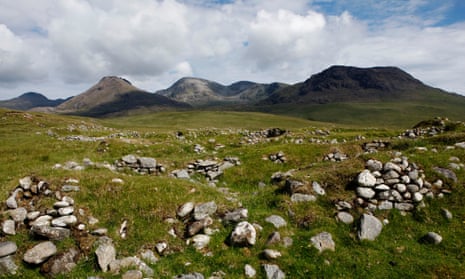Crown Estate Scotland, the body that manages land and seabed once owned outright by British monarchs, could help buy large Highland estates and then sell them back to local communities.
Crown Estate Scotland has agreed to support a radical agenda being pushed through by Scottish ministers to increase community ownership of large estates, in an agreement struck with the Scottish Land Commission.
With Scottish country estate and farm prices soaring to record levels, it is thought the organisation’s wealth and expertise could help communities buy land they might otherwise have been unable to bid for.
Ministers in Edinburgh are also planning to push state-owned bodies that own large amounts of land, including forests, crofting estates and islands such as Rum, to sell off more of their estates to community groups.
Mairi Gougeon, the Scottish cabinet secretary for rural affairs, land reform and islands, said on Wednesday that the Scottish land fund, which finances community buyouts, would be getting an extra £1m a year to support buyout bids.
By 2026, the fund’s annual budget should increase to £20m, she confirmed. But land reform campaigners and the Scottish Land Commission believe much more money is needed to allow significant transfers of land and property to community ownership.
Crown Estate Scotland is one of the country’s largest and most powerful property owners, holding buildings and 35,000 hectares (86,500 acres) of land worth nearly £560m, as well as controlling the lucrative licensing of seabed for offshore windfarms.
Until 2017, its assets were part of the UK-wide Crown Estate, which passes its profits to the Treasury to help fund the royal family’s living costs and public duties through the sovereign grant. It is independent of the UK government, passing its profits to Scottish ministers.
In a major policy shift that distances Crown Estate Scotland from its historic role guarding the monarch’s properties on behalf of the state, it has offered to help finance the purchase of a major Highland or country estate to ensure it can then be acquired by local villagers or tenants.
Gougeon said she wanted Forestry and Land Scotland, the state-owned forestry agency, to share more of its land with local communities and for state-owned crofting estates to do likewise.
It is understood there are also discussions about whether Rum, the inner Hebridean island owned by the conservation agency NatureScot, could be bought by islanders.
Scotland’s private estate owners are frequently irritated by land reform campaigners criticising the power of Scottish lairds. They argue that the Scottish government is the country’s largest landowner yet appears to do little to share out its assets with local people.
after newsletter promotion
Gougeon said the government had a responsibility to do more and to be ambitious, by encouraging state land owners to share their assets. “For me it’s about leading by example. I think that we want to see that diversity of land ownership in Scotland,” she said. “We have been on that journey [by] giving more power to communities.”
Hamish Trench, the chief executive of the Scottish Land Commission, said: “We see a strong leadership role for public land owners in enabling community ownership as well as developing new governance partnerships that increase community participation in decisions.
“We are pleased to be working with Crown Estate Scotland to pilot an approach in which they will acquire land with the deliberate intention of selling on to community ownership. This is intended to help address the challenge for communities acting in a fast-moving market and we hope to learn from this pilot to inform what others can do.”
A spokesperson for Crown Estate Scotland said the land acquisition proposal was at an early stage, so it was too early to say what size of assets it would buy.
“It can be difficult for community groups to fund buying assets. For example, sometimes they can’t raise the money required quickly enough,” he said. “This project is just getting underway and the type and scale of assets that may be involved is not yet clear.”








